- Top
- Kumamoto University URA Office
- Press Release
KU - URA Office
Click on the images to go to the full release.
2021 – 2020 – 2019 – 2018 – 2017 – 2016
-

Ancient Japanese pottery includes an estimated 500 maize weevils
18-Dec-2018
Prof. Hiroki Obata: Faculty of Humanities and Social SciencesResearchers have discovered an ancient Japanese pottery vessel from the late Jomon period (4500-3300 BP) with an estimated 500 maize weevils incorporated into its design.
-

Molecular adlayer produced by dissolving water-insoluble nanographene in water
5-Dec-2018
Prof. Soichiro Yoshimoto: Faculty of Advanced Science and Technology (FAST)Using "molecular containers" that encapsulate water-insoluble molecules, researchers developed a procedure to form a nanographene adlayer, a layer that chemically interacts with the underlying substance, by just mixing the molecular containers and nanographene together in water.
-
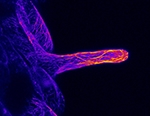
Plant root hairs form outward due to shank hardening
20-Nov-2018
Prof. Takumi Higaki: International Research Organization for Advanced Science and Technology (IROAST)A group of international researchers has discovered how plant root hair grows straight and long. The molecular mechanism for the suppression of growth on the sides of root hair had not been clarified until now.
-

The protein Matrin-3 determines the fate of neural stem cells in brain development
1-Nov-2018
Prof. Kanako Niimori-Kita: Faculty of Life Sciences (Basic Medicine)A research group from Kumamoto University has discovered a new neurogenic mechanism responsible for brain development, and revealed that the protein Matrin-3 is responsible for determining the fate of neural stem cells. A deficiency of this protein appears to disrupt brain development.
-
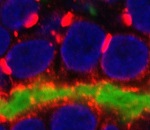
Reproducing pediatric kidney disease from human iPS cells
31-Oct-2018
Prof. Ryuichi Nishinakamura: Institute of Molecular Embryology and Genetics (IMEG)Kumamoto University scientists have found a 'skeleton key' for congenital kidney disease research. Using iPS cells generated from the skin cells of a patient with a nephrin mutation, the researchers have successfully developed kidney tissue that exhibits the early stages of congenital kidney disease.
-

Breaking osteoporosis: New mechanism activates bone-building cells
3-Sep-2018
Prof. Kazuya Yamagata: Department of Medical BiochemistryOn the road to developing new therapeutic drugs for osteoporosis and other bone degenerative diseases.
-
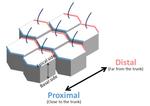
Regulation of cell orientation and shape for tissue morphogenesis
24-Jul-2018
Dr. Koji Kikuchi: Department of Medical PharmacologyA collaborative research group led by Kumamoto University has developed a new control system for regulating the morphology and orientation of cells that constitute animal tissues.
-

What the hunt brings: A survey of game meat and Japanese hunting culture
2-Jul-2018
Assoc. Prof. Shinjilt: Faculty of Humanities and Social SciencesJapan may not be well known for its hunting culture but hunting has ancient roots in the country. Some Japanese people, especially those living in mountainous areas, hunt deer, wild boar, and bears for sustenance and as a valuable source of protein.
-

A typical communication pattern of people with Alzheimer's disease
6-Jun-2018
Assist. Prof. Masateru Matsushita: Faculty of Life SciencesA research group from Kumamoto University has performed the first statistical analysis of "saving appearance responses" (SARs) in patients with various forms of dementia.
-

Japanese student discovers new crustacean species in deep sea hydrothermal vent
20-May-2018
Assoc. Prof. Motohiro Shimanaga: Center for Water Cycle, Marine Environment, and Disaster MitigationA new species of microcrustacean (Stygiopontius ) was collected from a submarine hot spring (hydrothermal vent) of a volcanic seamount (Myojin-sho caldera) in the Pacific Ocean off the coast of Japan.
-

Enzyme LSD1 found to regulate muscle fiber type differentiation
11-Apr-2018
Prof. Mitsuyoshi Nakao: Institute of Molecular Embryology and Genetics (IMEG)Kumamoto University researchers found that the LSD1 enzyme suppresses the expression of genes involved in mitochondrial metabolism and the slow-muscle genes that cooperate with them.
-

400-year-old documents reveal evidence of Japanese opium production and winemaking
2-Apr-2018
Prof. Tsuguharu Inaba: Faculty of LettersResearch from the Eisei Bunko Research Center of Kumamoto University reveals that Tadatoshi Hosokawa, a 17th century lord of Kyusyu, Japan, ordered his people to produce not only wine but also opium for medical purposes.
-
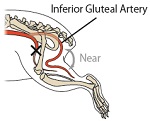
Humans risked limb ischemia in exchange for bipedal walking
27-Mar-2018
Arima Yuichiro: Kumamoto University HospitalA detailed comparison of mouse and human blood vessels with three-dimensional imaging
-

Breakthrough antimalarial drug delivery system using mesoporous silica nanoparticles
23-Mar-2018
Prof. Shinya Hayami: Graduate School of Science and Technology (Chemistry)Drug delivery systems (DDSs) control when and how much drugs are delivered to the body. Numerous DDS studies have been conducted but most have focused on treatments for cancer. New research from Kumamoto University uses a DDS to treat malaria.
-

A highly sensitive and multi-analytical system for hereditary kidney disease
9-Mar-2018
Prof. Hirofumi Kai: Faculty of Life SciencesResearchers from Kumamoto University in Japan have established a highly sensitive technology to assess Col4 functionality thereby paving the way to develop therapeutic drugs.
-

Determining the cause of difficult-to-control mitochondrial diseases
6-Mar-2018
Dr. Fanyan Wei: Faculty of Life SciencesA Japanese research group has discovered that taurine is conjugated with mitochondrial transfer RNAs (tRNAs), small RNAs that decode genetic information, and that taurine deficiency in tRNA dramatically reduces both mitochondrial protein translation and impairs mitochondrial membrane integrity.
-
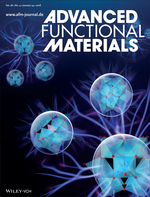
Assessing quantum dot photoemissions
28-Feb-2018
Dr. Tetsuya Kida: Graduate School of Science and Technology (Engineering)Recent research from Kumamoto University in Japan has revealed that polyoxometalates (POMs), typically used for catalysis, electrochemistry, and photochemistry, may also be used in a technique for analyzing quantum dot (QD) photoluminescence (PL) emission mechanisms.
-
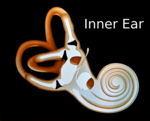
iPS cell-derived inner ear cells may improve congenital hearing loss
8-Feb-2018
Dr. Ryosei Minoda: Faculty of Life Sciences (Clinical Medicine)A Japanese research group has successfully grafted human iPS cell-derived inner ear cells that express human-derived proteins into the inner ears of embryonic mice. Hereditary hearing loss accounts for about half of all congenital hearing loss cases, and this work is a major contribution toward research that targets the embryonic inner ear.
-
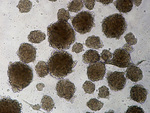
Ribosomes found to induce somatic cell pluripotency
4-Feb-2018
Dr. Kunimasa Ohta: Faculty of Life Sciences (Developmental Neurobiology)Kumamoto University researchers have found that the cause of somatic cell conversion into pluripotent stem cells is the ribosome, a protein synthesizing cellular organelle.
-

Treatment of nitrogen-polluted sediment using marine anammox bacteria
4-Feb-2018
Dr. Yasunori Kawagoshi: Graduate School of Science and TechnologyWorking on a way to alleviate eutrophication in coastal waters, a research collaboration between Kumamoto University in Japan and the Virginia Institute of Marine Science (VIMS) in the US have found a combination of bacteria with the potential to lighten the impact of excess nitrogen found in many coastal water systems.
-
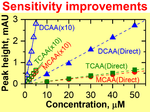
Improving the sensitivity for ionic solutes analysis
31-Jan-2018
Dr. Shin-ichi Ohira: Graduate School of Science and Technology (Chemistry)Kumamoto University researchers have developed a new method to improve the sensitivity of analytical systems for various ionic solutes, such as water from rivers, lakes, or even the faucet.














